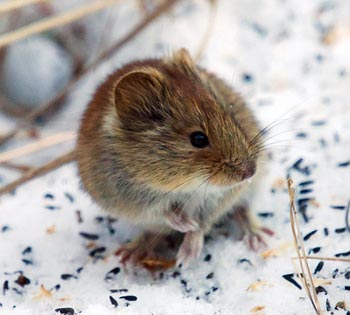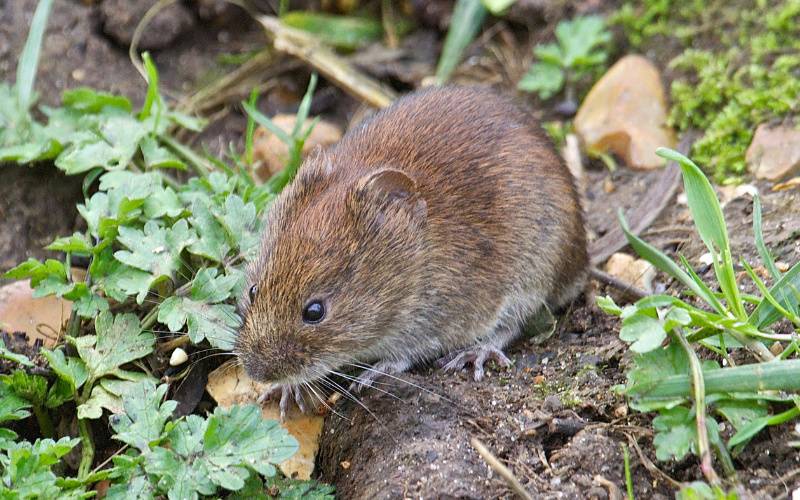Professional Methods for Vole Control and Prevention
Wiki Article
Grasping Vole Insect Control: Thorough Insights on Infestation Prevention and Therapy Methods
By identifying the subtle indications of vole invasion early on, we can take positive procedures to stop prevalent damages. In this conversation, we will explore the subtleties of vole actions, delve right into the recognition of invasion indicators, and discover the most reliable avoidance and treatment methods.Comprehending Vole Behavior
Taking a look at the foraging patterns of voles offers useful insights into their actions and environment choices. By observing their foraging behavior, researchers can acquire a far better understanding of where voles choose to establish their habitats and the extent of their environmental impact.Research indicates that voles exhibit selective feeding practices, choosing seeds, bulbs, and roots. This nutritional preference affects their foraging patterns, leading them to locations rich in plant life and ground cover. In addition, voles are understood to create elaborate passage systems for foraging and nesting purposes, showing a high level of flexibility to their environments.
Recognizing vole behavior is essential for carrying out targeted pest control procedures that disrupt their habitat choices and foraging tasks (vole yard damage). By examining their actions, professionals can create more efficient avoidance and therapy strategies to take care of vole infestations

Identifying Indicators of Vole Infestation
Vole problems can be spotted by acknowledging details indicators of their existence in a location. Among one of the most usual signs of a vole infestation is the existence of surface area runways. Voles develop networks of slim pathways on the ground that are typically about 2 inches large. These runways are usually found in grassy areas or under mulch or ground cover where voles can relocate freely and search for food.An additional essential indicator of vole invasion is the existence of little burrow openings in the ground. In addition, voles are known to leave behind chewed plant stems, roots, and light bulbs near their burrow openings, indicating their feeding activity in the area.
Locating these droppings along runways or near burrow openings can confirm a vole infestation. By being watchful for these signs, home proprietors can immediately address vole invasions and stop additional damage.
Applying Aggressive Prevention Procedures

In addition, utilizing natural vole deterrents like castor oil-based repellents or predator urine can work as effective safety nets. It is additionally suggested to consistently examine outdoor rooms for any kind of indications of vole task, such as runways or tunnel openings, to address prospective infestations without delay. vole pest control. By taking on these proactive prevention approaches, building proprietors can significantly minimize the chance of vole damage and preserve the health and wellness and appearances of their landscapes
Efficient Therapy Approaches
Integrating targeted capturing methods and utilizing authorized rodenticides are important elements of reliable treatment strategies for managing vole infestations. Capturing can be a reliable method to decrease vole populations, particularly when positioned vole lawn damage tactically in their active paths. Snap catches and live catches can both work, with the last permitting the capture and relocation of voles. When using rodenticides, it is essential to follow safety standards to stop damage to non-target pets and animals. Area rodenticides in safe and secure lure stations to decrease dangers to unplanned targets. Furthermore, environment modification, such as reducing ground cover and getting rid of sources of food, can assist discourage voles from infesting a location. Regular tracking and maintenance are likewise key elements of successful treatment strategies to make sure that vole populations are kept under control. By integrating trapping, rodenticides, habitat adjustment, and constant surveillance, reliable vole pest control can be achieved.Surveillance and Maintenance Tips
Regular tracking permits for the very early detection of vole activity, enabling punctual treatment before problems get worse. To properly check vole populations, purposefully positioned catches can be used in vole paths or near burrow entryways.Furthermore, maintaining a clean and clean landscape is important in vole prevention. Clearing away debris, such as heaps of wood or thick greenery, gets rid of prospective vole habitats. On a regular basis cutting yards and trimming plants aids minimize vole concealing areas and decreases their accessibility to food resources.
Furthermore, continuous maintenance of physical obstacles, such as fences or wire mesh, is vital to avoid vole intrusion. Examining and fixing any type of damages to these frameworks guarantees that vole control remains effective in protecting residential or commercial properties from invasions. By including these tracking and maintenance practices into a thorough vole insect control plan, people can successfully handle vole populations and shield their buildings from damage.
Final Thought
In verdict, grasping vole bug control needs a strong understanding of vole habits, the ability to determine indications of infestation, executing aggressive avoidance actions, reliable therapy approaches, and constant monitoring and maintenance. By taking a detailed approach to vole control, individuals can efficiently handle and stop problems, eventually safeguarding their residential property and bordering atmosphere from damages created by these little rodents.In this conversation, we will explore the subtleties of vole behavior, delve into the recognition of problem signs, and discover the most efficient prevention and therapy methods.Including targeted capturing methods and making use of authorized rodenticides are important components of effective therapy methods for managing vole problems. To effectively monitor vole populations, tactically placed catches can be used in vole runways or near burrow entries. Checking and repairing any kind of problems to these structures makes certain that vole control stays reliable in protecting buildings from infestations. By incorporating these surveillance and upkeep techniques into an extensive vole bug control strategy, people can efficiently manage vole populations and safeguard their properties from damages.
Report this wiki page